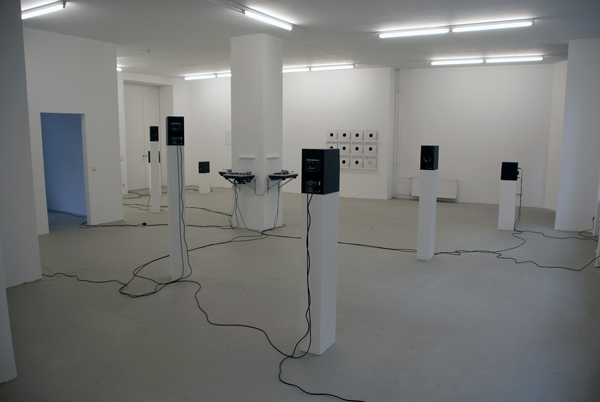After obtaining the ambient sounds of eleven “natural” art locations in New York – museums, fairs, galleries – Graydon cut the recordings onto unique acetate phonograph records, dubplates, that allow visitors to reshape PROGRAM’s gallery space with sound. Environment is used as a material. Replaying the sounds of these New York institutions as they intermix with the ambient sounds of PROGRAM, space is at once extended and collapsed. Dubplates, for the music industry, are used in mastering studios before the final master. They are meant for temporary use, they deteriorate over time.The sounds recorded on their surface begin to dissolve after about fifty plays.
- Carson Chan
- Carson Chan
Untitled (plate tectonics)
2009, ongoing
multi-channel sound installation with acetate phonograph records






A museum or exhibition space aims to present a coherent itinerary of (largely visual) experience. Sound tends to tell a different story, revealing places and intervals that are disruptive, distracted, intense, or diffuse, but rarely discrete. Indeed, sound abhors discretion. It can only exist through disruption and agitation. Sound is inclusive and immersive: if you hear it, it is vibrating you. This helps to explain the conflicted relationship contemporary art exhibition has had with sound work, in which playing pieces on headphones has become the favored way of taming sound into an ideally discrete sound-object. With this in mind, Untitled (plate tectonics) works with the exhibition space(both recorded and present) not as a resolved environment for the reception and contemplation of works, but rather as both an impulse (as in electrical energy) and as a material, a moldable substance useful in the creation of other ideas, further experiences, alternate places.
- Andy Graydon
- Andy Graydon
video excerpt
Untitled (plate tectonics) at Cornerhouse from Andy Graydon on Vimeo.